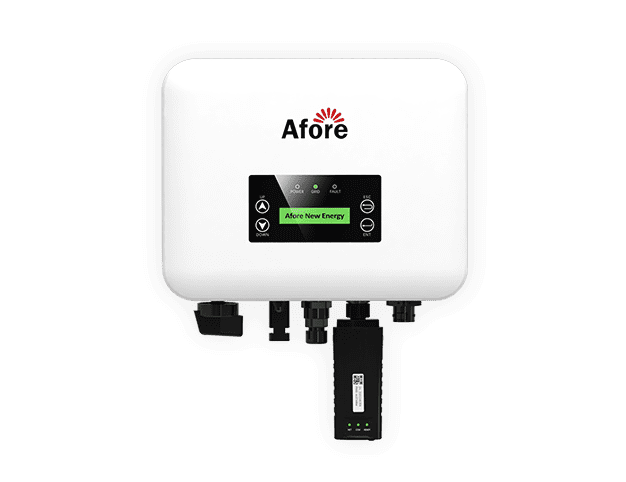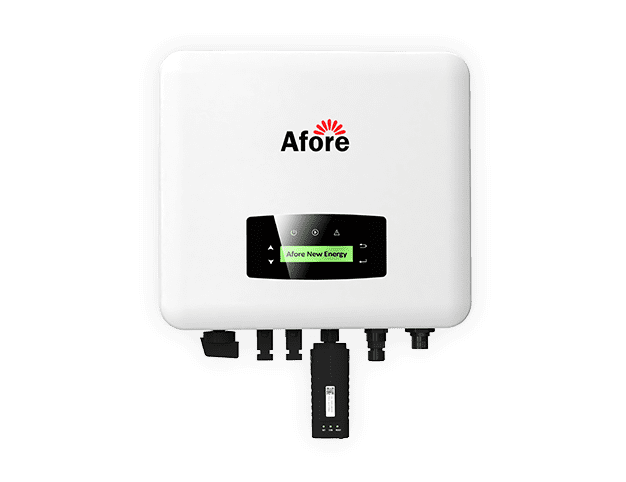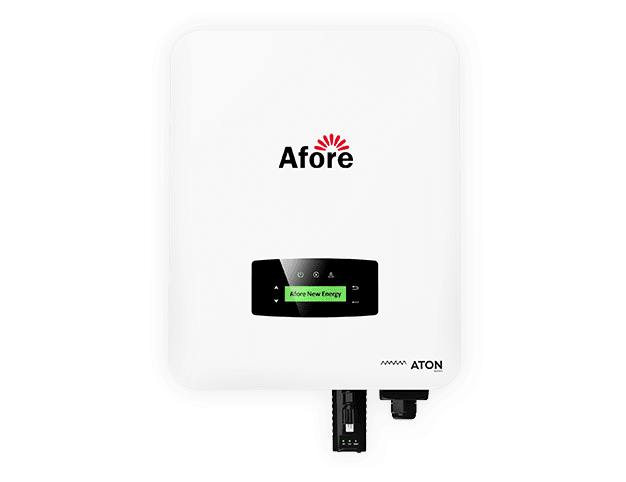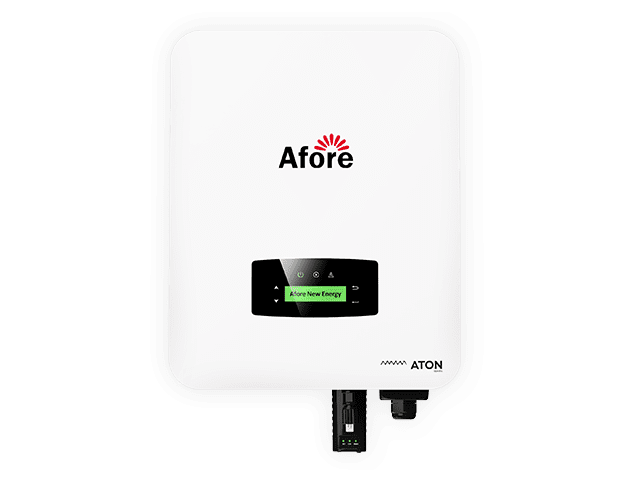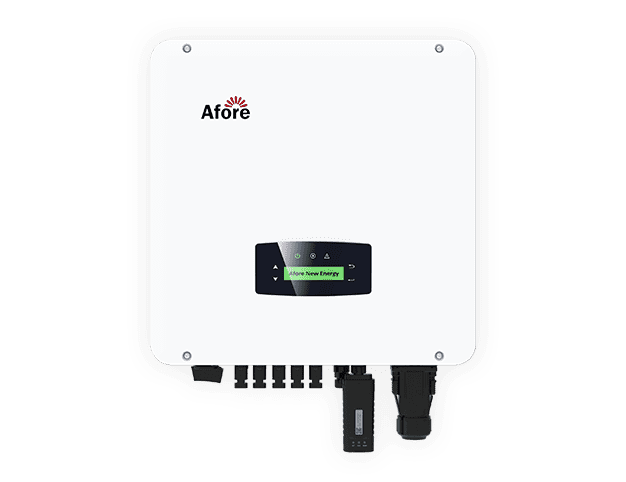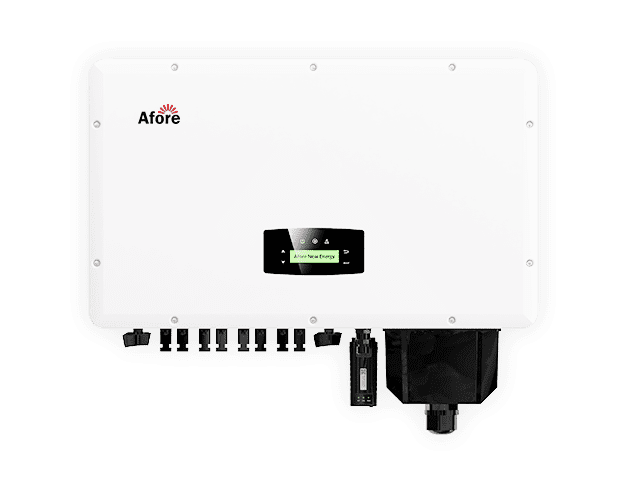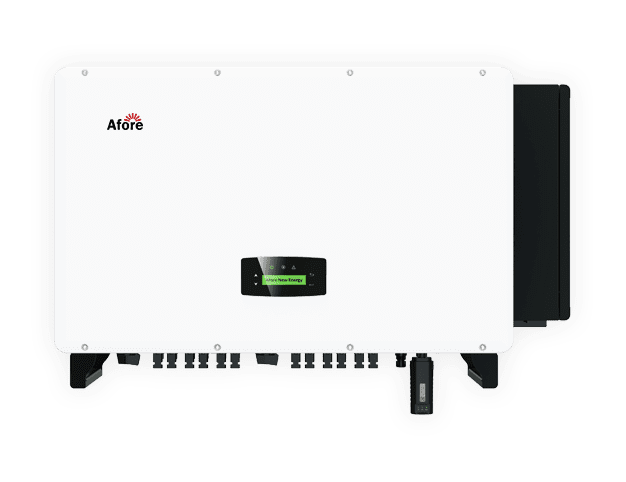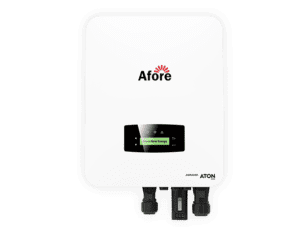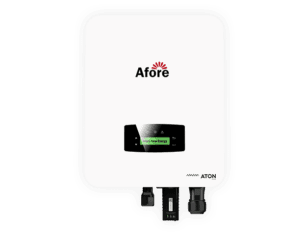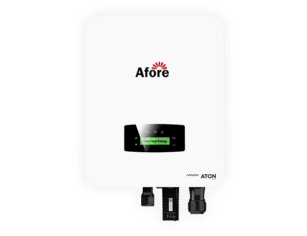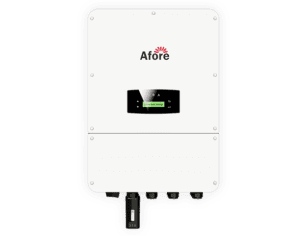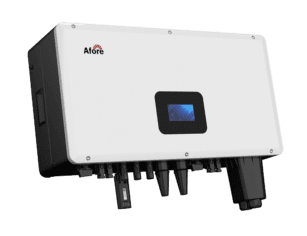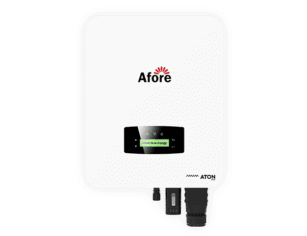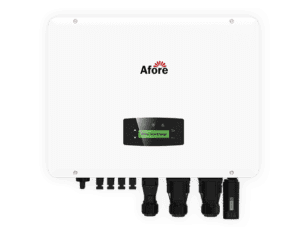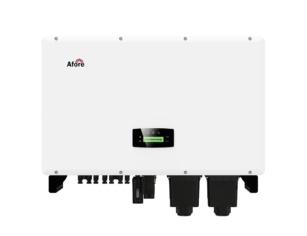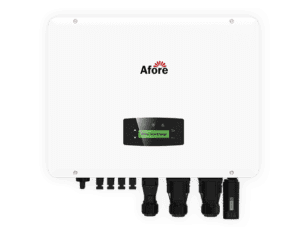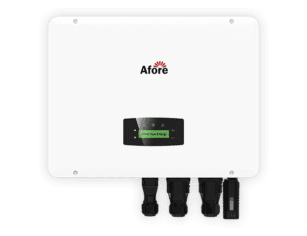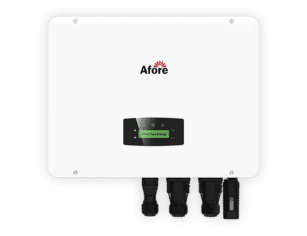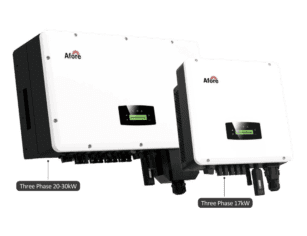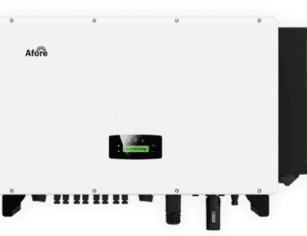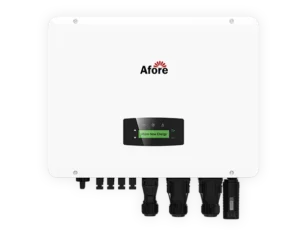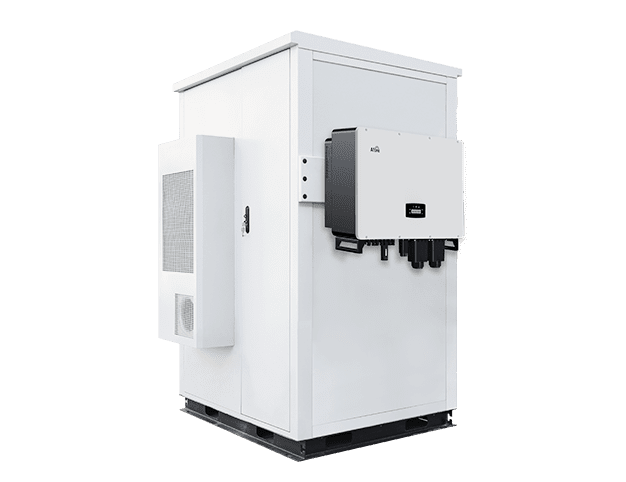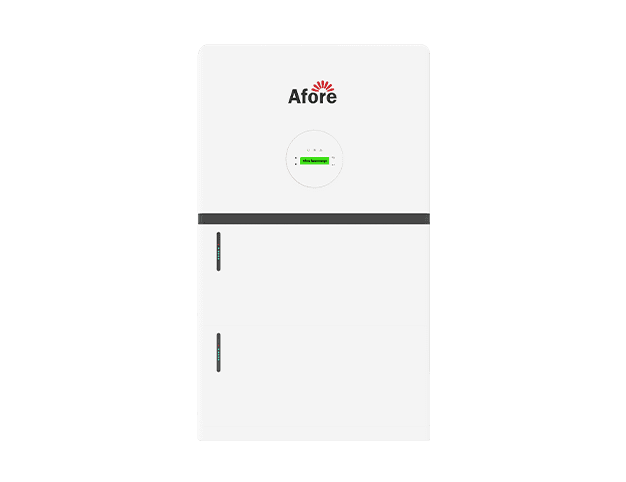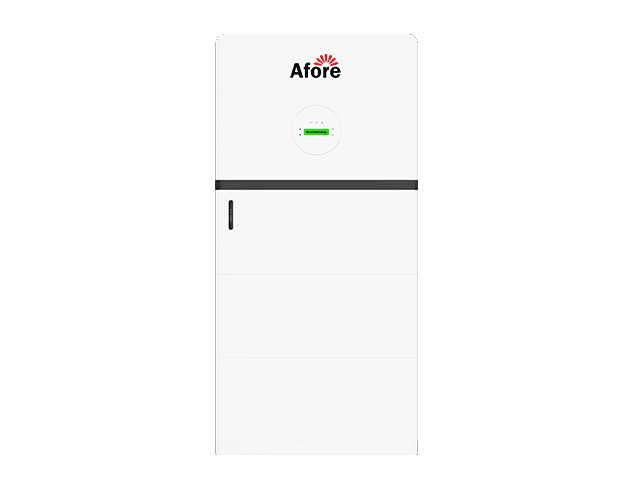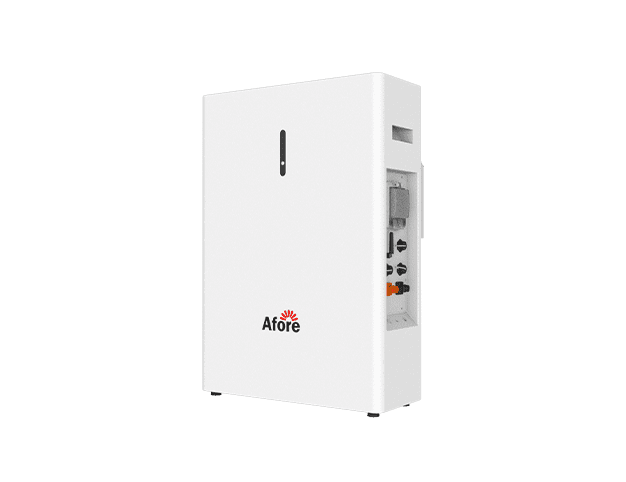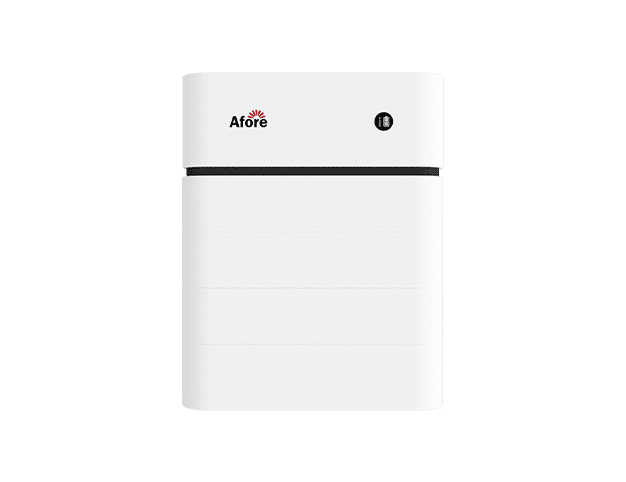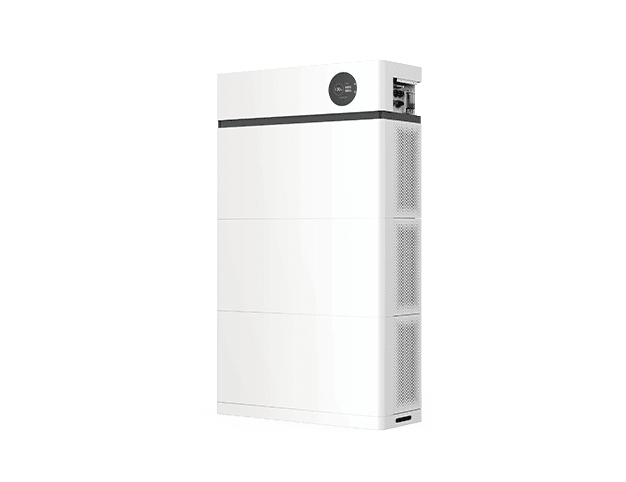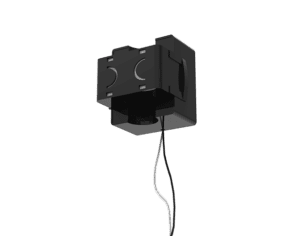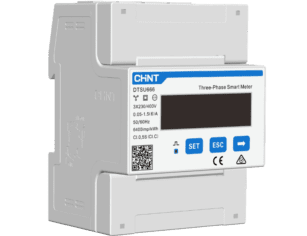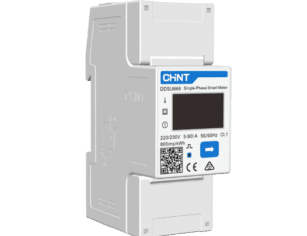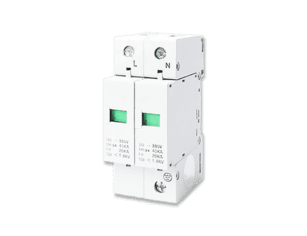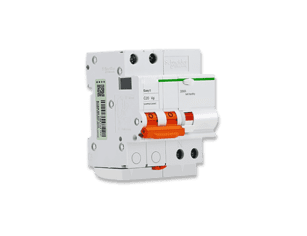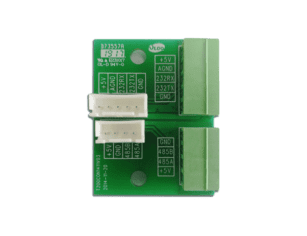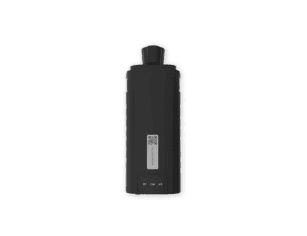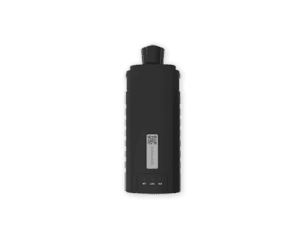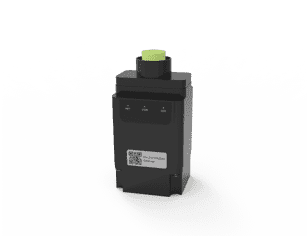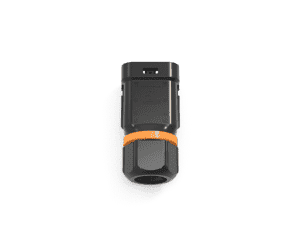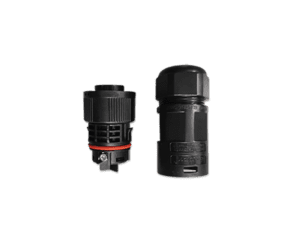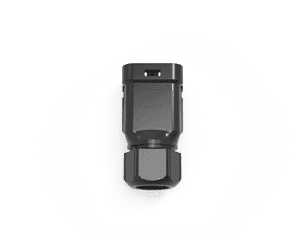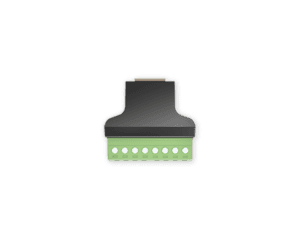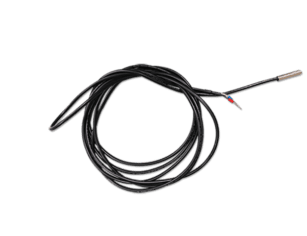¿Qué es el Anti-Islanding en los inversores de conexión a red?
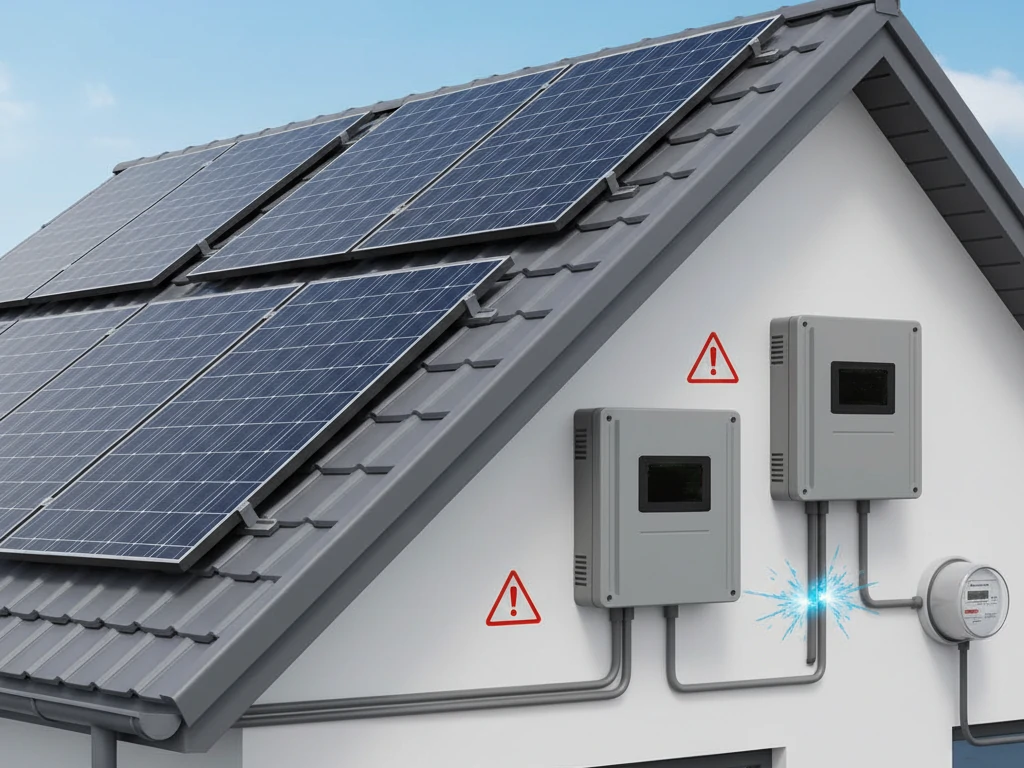
Índice
En el ámbito de la energía solar, garantizar la seguridad y la fiabilidad es primordial. Una característica de seguridad fundamental en los sistemas fotovoltaicos conectados a la red es el sistema anti-isla. Este mecanismo impide que los inversores solares sigan suministrando energía a la red durante un corte de suministro, protegiendo así a los trabajadores de la empresa eléctrica y manteniendo la estabilidad de la red.
Comprender el insularismo y el antiinsularismo
Cuando se trata de sistemas de energía solar, especialmente los conectados a la red, es esencial comprender los conceptos de funcionamiento en isla y anti-isla, tanto para la seguridad como para la fiabilidad del sistema. Estos conceptos son fundamentales para la interacción de los inversores solares con la red eléctrica. Sin una protección antiisla adecuada, un sistema solar puede inyectar electricidad involuntariamente en un segmento aislado de la red durante un corte, creando graves peligros y riesgos operativos. Profundicemos en qué es el islanding y cómo lo evitan los mecanismos anti-islanding.
¿Qué es el insularismo?
La conexión en isla se produce cuando una parte de la red eléctrica queda aislada eléctricamente de la red principal, pero sigue recibiendo electricidad de recursos energéticos distribuidos, como paneles solares u otros sistemas renovables. En pocas palabras, es como una isla en miniatura autoalimentada en medio de un apagón.
Los peligros de la insularidad no son sólo teóricos: son muy reales:
- Riesgo para los trabajadores de los servicios públicos: Cuando las líneas aparecen desenergizadas durante el mantenimiento, pero el sistema solar sigue inyectando electricidad a la red aislada, puede producirse una electrocución.
- Daños en los equipos: El funcionamiento en isla puede causar fluctuaciones de tensión y frecuencia, dañando tanto el inversor solar como los aparatos conectados.
- Incumplimiento de la normativa: Muchas normas, como la IEEE 1547 y la UL 1741, exigen específicamente medidas para evitar la formación de islas. No aplicarlas puede acarrear multas o el cierre del sistema por parte de la compañía eléctrica.
Para los propietarios de viviendas y los diseñadores de sistemas, reconocer el potencial de aislamiento pone de relieve por qué son fundamentales unas prácticas de instalación y selección de inversores adecuadas. Los inversores solares modernos están equipados con sofisticados sistemas de monitorización para detectar estas condiciones de aislamiento y reaccionar al instante.
¿Qué es el antislanding?
El anti-islanding es el mecanismo de seguridad proactivo integrado en los inversores solares que evita que se produzca el aislamiento. En pocas palabras, garantiza que cuando la red principal se cae, el inversor deja inmediatamente de enviar electricidad al segmento aislado.
He aquí cómo funciona en la práctica el antiembarco:
- Monitorización de la red: El inversor de conexión a red supervisa continuamente los parámetros clave de la red, como la tensión, la frecuencia y el ángulo de fase. Cualquier desviación del funcionamiento normal es una señal potencial de un problema en la red.
- Respuesta automática: Si el inversor detecta condiciones anormales que sugieren un caso de funcionamiento en isla, se apaga automáticamente, desconectándose de la red para evitar cualquier retroalimentación peligrosa.
- Protocolo de reconexión: Una vez que la red vuelve a ser estable, el inversor sigue un protocolo controlado para reconectarse de forma segura sin provocar sobretensiones ni desestabilizaciones.
La función antiisla no es sólo una característica técnica: es una necesidad normativa y un componente clave para la seguridad de los sistemas de energía solar. Por ejemplo, los inversores solares conectados a la red en sistemas residenciales y comerciales deben cumplir unas estrictas normas antidesconexión para proteger tanto a las personas como a las infraestructuras.
Desde un punto de vista práctico, el anti-islanding también beneficia a los propietarios al reducir el riesgo de daños en equipos caros durante los apagones, mantener la longevidad del inversor solar y garantizar el cumplimiento ininterrumpido de la normativa de la empresa eléctrica.
Importancia de la protección antislanding
Nunca se insistirá lo suficiente en la importancia de la protección antiembalamiento en los sistemas modernos de energía solar. A medida que más hogares y empresas adoptan la energía solar, la seguridad, fiabilidad y cumplimiento normativo de estos sistemas se han convertido en preocupaciones fundamentales. La protección antiisla no es sólo un requisito técnico, sino una salvaguarda fundamental que protege vidas, equipos y la integridad de la red eléctrica. Comprender su importancia ayuda a los diseñadores de sistemas, instaladores y propietarios de viviendas a tomar decisiones informadas a la hora de seleccionar inversores solares y diseñar sistemas fotovoltaicos conectados a la red.
Garantizar la seguridad
La seguridad es la razón más inmediata y convincente para implantar una protección antiisla. Cuando se produce un apagón, una instalación solar conectada a la red sin protección podría seguir inyectando electricidad en la sección aislada de la red. Esto crea lo que se conoce como un escenario de aislamiento, que conlleva riesgos significativos:
- Protección de los trabajadores de servicios públicos: Imagine a un técnico de una compañía eléctrica reparando líneas eléctricas durante un apagón. Sin el sistema antiisla, el inversor de conexión a red podría seguir suministrando corriente a lo que parece ser un circuito sin tensión. El sistema antiisla garantiza que el inversor de conexión a red se apague al instante, eliminando el riesgo de electrocución.
- Prevención de daños en los equipos: Cuando se produce una conexión en isla, la tensión y la frecuencia de la red aislada pueden fluctuar salvajemente. Los aparatos sensibles, los componentes electrónicos y el propio inversor pueden sufrir graves daños. El sistema antiisla actúa a prueba de fallos, desconectando el sistema antes de que se produzca ningún daño.
- Minimizar los riesgos de incendio: La retroalimentación incontrolada en un circuito aislado puede causar a veces sobrecalentamiento, chispas o incluso incendios. Al desconectar de forma proactiva, la función antiisla protege tanto a los bienes como a las personas.
En resumen, la función anti-isla no es sólo una casilla de verificación técnica, es una función que salva vidas y garantiza que el sistema de energía solar funcione de forma segura en cualquier circunstancia. Cualquier inversor de conexión a red instalado sin un sistema antiinconexión robusto se considera un riesgo para la seguridad.
Cumplimiento de las normas
Más allá de la seguridad, la protección antiinundación es esencial para el cumplimiento de la normativa. Los sistemas solares conectados a la red deben cumplir las normas nacionales e internacionales para garantizar una integración segura con la red eléctrica. Algunas de las normas más importantes son:
- IEEE 1547: Esta norma establece los requisitos técnicos para la interconexión de los recursos energéticos distribuidos con la red eléctrica. Hace hincapié en la necesidad de que los inversores detecten las condiciones de aislamiento y se desconecten automáticamente.
- UL 1741: Ampliamente reconocida en Norteamérica, la norma UL 1741 define los requisitos de seguridad para inversores, convertidores y controladores utilizados en sistemas de generación distribuida. El anti-islanding es un requisito obligatorio según esta norma.
- Normativa local: Muchas empresas de servicios públicos hacen cumplir sus propios protocolos antiinundación para evitar responsabilidades y proteger la estabilidad de la red. Su cumplimiento garantiza la aprobación sin problemas de las solicitudes de interconexión y evita sanciones.
Garantizar que un inversor de conexión a red cumple estas normas no sólo protege a las personas y los bienes, sino que también protege al propietario o a la empresa de las consecuencias legales y financieras. Además, genera confianza con los proveedores de servicios públicos, ya que demuestra que el sistema solar está instalado de forma profesional y cumple las mejores prácticas.
Al combinar las ventajas de la seguridad con el cumplimiento de la normativa, la protección antiinundación se convierte en una piedra angular de la implantación responsable de la energía solar. Tanto los propietarios de viviendas como los diseñadores de sistemas deberían considerarla un factor crítico a la hora de elegir inversores, diseñar sistemas y planificar el mantenimiento.
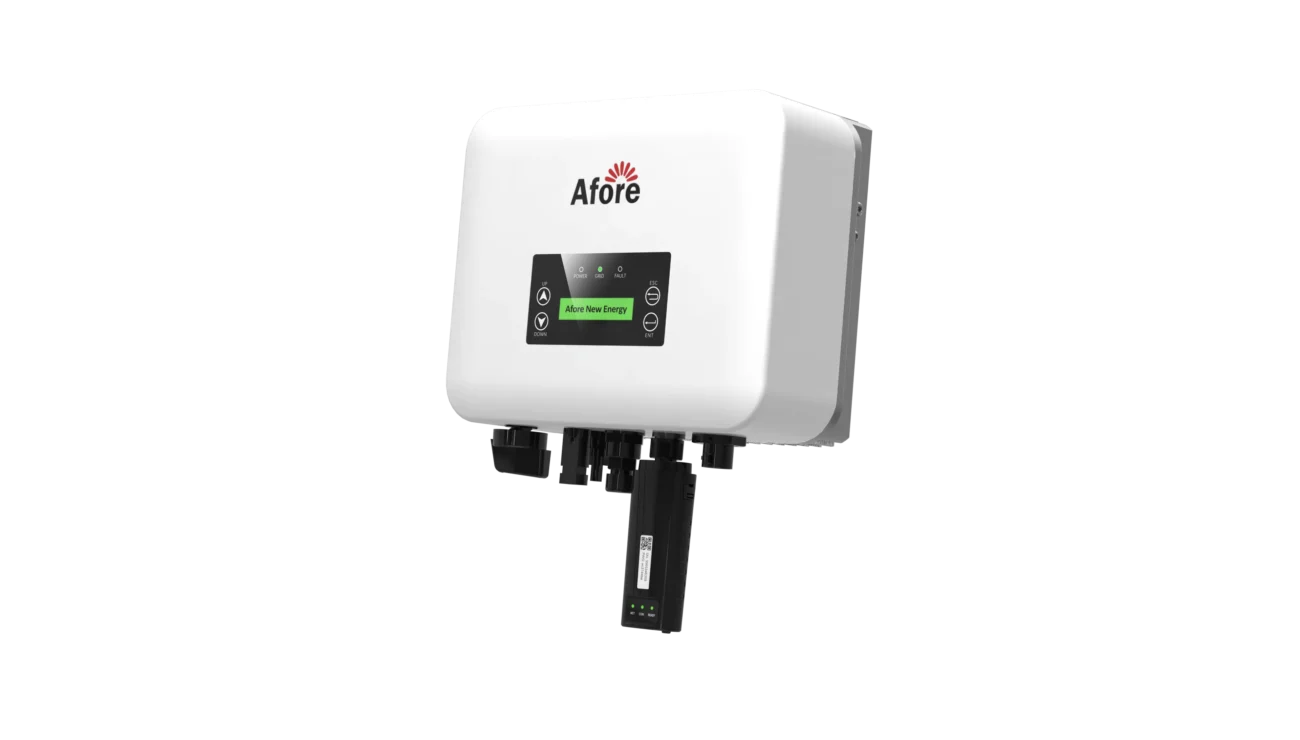
Cómo funciona el sistema anti-isla en los inversores de conexión a red
Entender cómo funciona el sistema anti-isla en los inversores solares es esencial tanto para los diseñadores de sistemas como para los propietarios de viviendas que desean una instalación solar fiable, segura y conforme a las normas. El mecanismo es a la vez sofisticado y elegante: permite al inversor supervisar continuamente la red, detectar anomalías y responder al instante para evitar posibles peligros. Desglosemos los componentes básicos de este proceso.
Técnicas de detección
La detección es la piedra angular de la lucha contra el desvío. Los inversores de conexión a red están equipados con avanzados sistemas de supervisión que rastrean continuamente la salud de la red eléctrica. Existen dos técnicas de detección principales:
Detección activa
En la detección activa, el inversor solar introduce en la red perturbaciones minúsculas y controladas, como pequeños cambios de tensión o frecuencia. Estas perturbaciones se controlan en tiempo real. En condiciones normales, la red absorbe estas fluctuaciones y responde de forma predecible. Sin embargo, si la red se aísla debido a un corte (un escenario de aislamiento), no se producirá la respuesta esperada. El inversor interpreta esta discrepancia como un fallo de la red y desencadena una desconexión. Este método es muy eficaz para identificar situaciones de aislamiento ocultas o "encubiertas" que los sistemas pasivos podrían pasar por alto.
Detección pasiva
La detección pasiva implica la supervisión continua de parámetros de la red como la tensión, la frecuencia y el ángulo de fase. El inversor de conexión a red busca desviaciones más allá de los umbrales preestablecidos. Por ejemplo, si la tensión sube o baja fuera del rango esperado, o la frecuencia se desvía de su valor nominal, el inversor asume que puede estar produciéndose un evento de islanding. La detección pasiva es sencilla y fiable, pero puede responder con algo más de lentitud que los métodos activos en algunas situaciones complejas de la red.
Detección híbrida
Muchos inversores modernos combinan métodos activos y pasivos, creando un sistema de detección híbrido. Este enfoque maximiza la fiabilidad, minimiza los falsos disparos y garantiza una respuesta rápida a las perturbaciones típicas y atípicas de la red.
Al observar continuamente la red, estas técnicas de detección permiten a los inversores solares reaccionar en milisegundos, garantizando la seguridad tanto del sistema como de cualquiera que trabaje en la red.
Mecanismos de desconexión
Una vez detectada una situación de aislamiento, el inversor debe actuar con rapidez para evitar la retroalimentación de electricidad a una red aislada. Los mecanismos de desconexión están diseñados para ser rápidos y seguros:
Apagado automático
El paso más crítico es la desconexión inmediata del inversor de conexión a red. Al detectar condiciones de red anormales, el inversor deja de generar energía y se desconecta de la red. Esta respuesta automática evita que la electricidad fluya hacia un entorno potencialmente peligroso, protegiendo tanto a los equipos como al personal.
Protocolos de reconexión
Tras una interrupción de la red, el inversor de conexión a red no puede simplemente reiniciarse inmediatamente. La mayoría de los inversores siguen un protocolo de reconexión controlada, que normalmente implica esperar varias lecturas estables de tensión y frecuencia antes de reanudar la producción de energía. De este modo se evitan sobretensiones o inestabilidad cuando la red vuelve a conectarse, garantizando una transición suave y segura.
Funciones de redundancia y seguridad
Los inversores avanzados suelen incluir sistemas de reserva para garantizar la desconexión incluso si falla una vía de detección. Esta redundancia refuerza la fiabilidad y el cumplimiento de normas de seguridad como IEEE 1547 y UL 1741.
En combinación, estos mecanismos de detección y desconexión hacen que el anti-islanding sea una característica indispensable de los modernos inversores solares conectados a la red. Proporcionan una combinación perfecta de seguridad, fiabilidad y cumplimiento de la normativa, dando a los propietarios de sistemas la confianza de que su inversión solar funciona de forma segura en todas las condiciones.
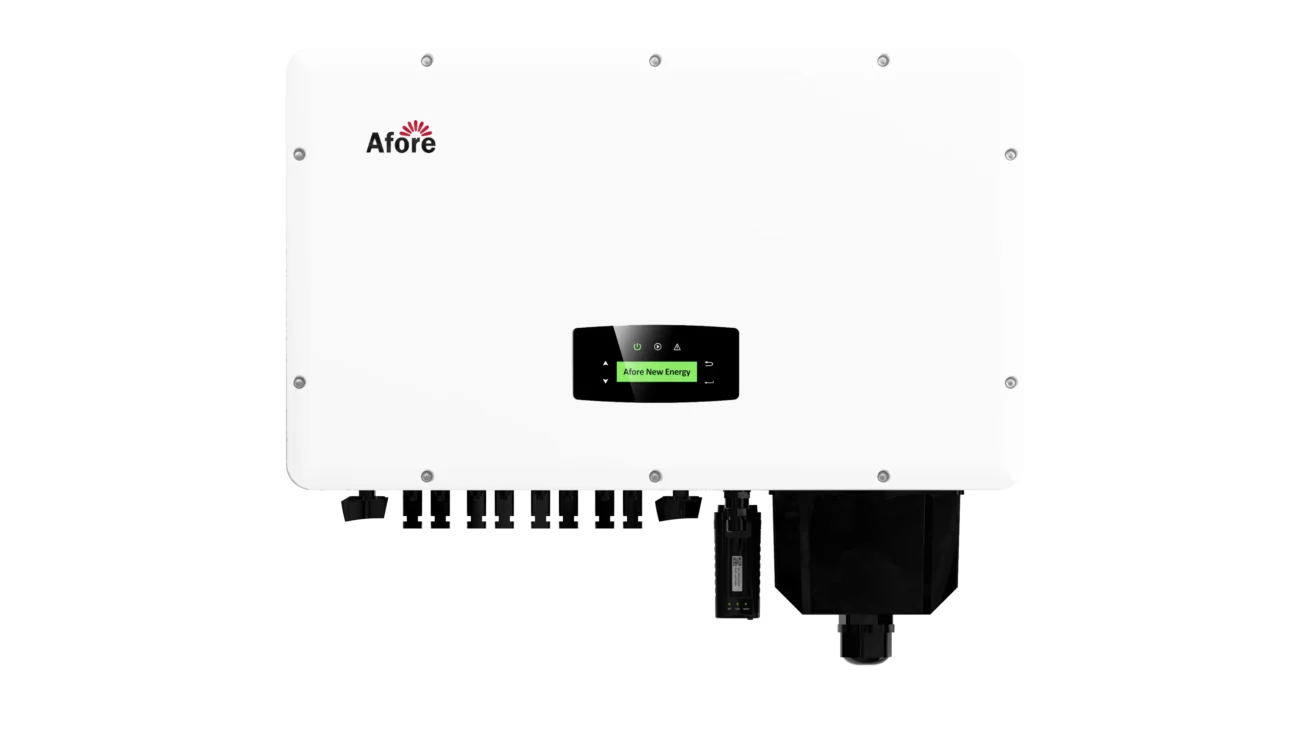
Superar las limitaciones de los sistemas en red contra el aterrizaje forzoso
Aunque la protección antiembalamiento es esencial para la seguridad y el cumplimiento de la normativa, no está exenta de dificultades en los sistemas solares conectados a la red del mundo real. Comprender estas limitaciones y explorar soluciones prácticas es fundamental para los diseñadores de sistemas, instaladores y propietarios de viviendas que buscan soluciones de energía solar fiables y eficientes. Si aborda estas limitaciones de forma proactiva, podrá asegurarse de que su inversor solar funcione de forma óptima sin comprometer la seguridad ni el cumplimiento de la normativa.
Desafíos de la antislanding
A pesar de sus ventajas, el anti-islanding puede introducir ciertas complejidades en los sistemas conectados a la red:
Complejidad del sistema
La implementación del sistema antiisla requiere sofisticados algoritmos de detección y mecanismos de desconexión con capacidad de respuesta dentro del inversor de conexión a red. La integración de estas funciones aumenta la complejidad general del sistema, lo que dificulta la instalación y el mantenimiento tanto para los técnicos como para los propietarios.
Falsos disparos
En algunos casos, los inversores pueden detectar erróneamente condiciones de funcionamiento en isla durante fluctuaciones normales de la red, lo que provoca cortes innecesarios. Este fenómeno, conocido como falsa desconexión, puede reducir la eficiencia del sistema y frustrar a los usuarios que esperan una energía solar ininterrumpida.
Capacidad de copia de seguridad limitada
Los inversores solares conectados a la red con estrictos protocolos anti-isla no pueden suministrar energía durante los cortes, aunque se disponga de suficiente energía solar. Esta limitación puede frustrar a los propietarios que buscan una alimentación continua o una independencia parcial de la red.
Implicaciones económicas
Los inversores avanzados con sólidas funciones de detección anti-isla y seguridad suelen ser más caros que los modelos básicos. Aunque el coste añadido mejora la seguridad, puede influir en la viabilidad financiera global de los proyectos solares residenciales o comerciales.
Dependencia de la red
El sistema anti-islanding está intrínsecamente ligado a la estabilidad de la red eléctrica. Cualquier irregularidad, por pequeña que sea, puede provocar un apagón, lo que puede afectar a la fiabilidad para los usuarios que esperan un suministro de energía solar sin interrupciones.
Estos retos subrayan la importancia de seleccionar el inversor solar adecuado e incorporar estrategias adicionales para mantener simultáneamente el rendimiento y la seguridad del sistema.
Soluciones y alternativas
Afortunadamente, existen varios enfoques prácticos para superar las limitaciones del antiembarque manteniendo el cumplimiento de la normativa y la seguridad:
Sistemas híbridos con almacenamiento de energía
La integración del almacenamiento en batería en una instalación solar permite que el sistema siga suministrando electricidad durante los cortes de red. Los inversores solares híbridos gestionan a la vez el funcionamiento conectado a la red y el almacenamiento de energía fuera de la red, lo que evita la restricción de antiinundación durante los cortes sin violar los protocolos de seguridad.
Tecnologías avanzadas de inversores
Los inversores modernos incluyen a menudo métodos de detección híbridos que combinan estrategias activas y pasivas contra el bloqueo. Estas mejoras reducen los falsos disparos y mejoran la precisión de la detección, lo que permite un funcionamiento más suave en condiciones de red variables.
Gestión inteligente de la carga
Al gestionar estratégicamente las cargas domésticas o comerciales, el sistema puede dar prioridad a los dispositivos críticos durante los cortes de suministro, incluso respetando los protocolos anti-isla. Este enfoque maximiza la eficiencia energética sin comprometer la seguridad.
Actualizaciones periódicas de firmware y supervisión
Muchos inversores solares pueden recibir actualizaciones que perfeccionan los algoritmos anti-islanding. La supervisión periódica garantiza que el sistema responda correctamente a las perturbaciones de la red en el mundo real, mejorando la fiabilidad y la confianza del usuario.
Diseño profesional de sistemas
La colaboración con instaladores e ingenieros certificados ayuda a adaptar la configuración antiinundación a las condiciones de red específicas de su zona. Un diseño adecuado del sistema reduce las paradas innecesarias y garantiza el cumplimiento de los requisitos de las compañías eléctricas locales.
Combinando estas estrategias, los propietarios de viviendas y las empresas pueden disfrutar de todas las ventajas de la energía solar al tiempo que mitigan las limitaciones inherentes a la antirretorno. En última instancia, el objetivo es un sistema solar seguro, fiable y eficiente que cumpla tanto las normas reglamentarias como las expectativas de los usuarios.
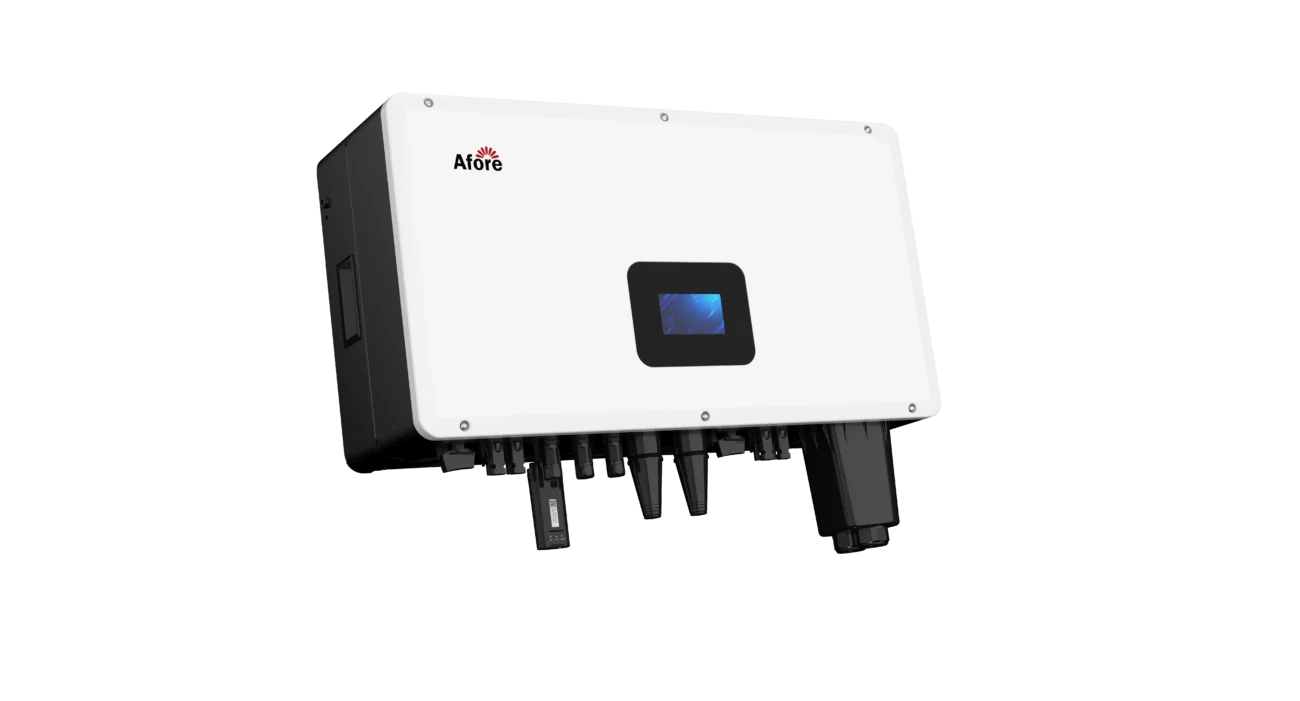
Comprobación de la protección contra el aterrizaje forzoso
Garantizar que la protección anti-isla funciona correctamente no es opcional: es un aspecto crítico para mantener un sistema de energía solar seguro, fiable y que cumpla las normas. Incluso los inversores solares más avanzados pueden fallar en determinadas condiciones si sus mecanismos anti-isla no se prueban y validan adecuadamente. Las pruebas proporcionan la confianza de que el sistema responderá adecuadamente durante las perturbaciones de la red, protegiendo tanto la propiedad como al personal y cumpliendo al mismo tiempo las normas reglamentarias.
Métodos de ensayo
Existen varios métodos para probar la protección antiembalamiento, cada uno con aplicaciones específicas según se trate de un sistema de laboratorio o de campo:
Pruebas de laboratorio
Las pruebas de laboratorio simulan diversas perturbaciones de la red en un entorno controlado. Los ingenieros pueden crear condiciones como caídas de tensión, desviaciones de frecuencia o pérdida total de la red para observar cómo responde el inversor solar. Este método permite medir con precisión los tiempos de desconexión, la sensibilidad y la precisión del mecanismo anti-isla. Las pruebas de laboratorio resultan especialmente útiles para verificar los nuevos modelos de inversores antes de implantarlos en sistemas reales.
Pruebas de campo
Las pruebas de campo consisten en supervisar el inversor de conexión a red durante perturbaciones reales de la red o cortes programados. Aunque son más difíciles que las pruebas de laboratorio, las pruebas de campo proporcionan una visión práctica de cómo se comporta el sistema en condiciones reales, incluidas las fluctuaciones inesperadas de tensión o frecuencia. Las pruebas de campo suelen incluir situaciones de desconexión controlada coordinadas con la empresa eléctrica para garantizar la seguridad y el cumplimiento de las normas.
Equipos de ensayo automatizados
Los equipos de prueba avanzados pueden automatizar el proceso introduciendo anomalías simuladas en la red mientras registran los tiempos de respuesta de los inversores y otros parámetros críticos. Este método mejora la eficiencia, reduce los errores humanos y permite estandarizar las pruebas en varios sistemas.
Enfoques combinados
Muchos instaladores y operadores de sistemas utilizan una combinación de pruebas de laboratorio, sobre el terreno y automatizadas para garantizar una validación completa. Los enfoques híbridos proporcionan una imagen más completa del rendimiento del inversor, identificando posibles problemas antes de que afecten al funcionamiento en el mundo real.
Importancia de las pruebas periódicas
La comprobación periódica de la protección antiembarco es esencial para mantener la fiabilidad y seguridad del sistema a largo plazo:
Fiabilidad permanente
Con el tiempo, los inversores pueden sufrir desviaciones en sus algoritmos de detección, errores de firmware o cambios en las condiciones de la red. Las pruebas periódicas garantizan que los mecanismos antiisla sigan funcionando según lo previsto, evitando peligrosas situaciones de isla.
Verificación del cumplimiento
Las empresas de servicios públicos y los organismos reguladores suelen exigir pruebas de que los inversores solares mantienen su capacidad antiinundación. Las pruebas periódicas documentan que los sistemas cumplen normas como IEEE 1547 y UL 1741, lo que evita posibles multas o la desconexión de la red.
Detección precoz de problemas
Las pruebas periódicas pueden identificar problemas como retrasos en los tiempos de desconexión, falsos disparos o degradación del hardware antes de que supongan un riesgo para la seguridad. Este enfoque proactivo protege tanto el sistema solar como la infraestructura de la red.
Fomentar la confianza de los usuarios
Para los propietarios de viviendas y los operadores comerciales, saber que la protección antiembalamiento ha sido rigurosamente probada proporciona tranquilidad. Garantiza un funcionamiento seguro del sistema, incluso en condiciones de red impredecibles.
Mediante la aplicación de protocolos de prueba coherentes y exhaustivos, los propietarios e instaladores de sistemas solares pueden maximizar la eficacia de las funciones antiinundación, manteniendo un equilibrio entre seguridad, eficiencia y cumplimiento de la normativa.
Conclusión
El antiembarcamiento es un elemento de seguridad esencial en inversores solares que garantiza la estabilidad de la red y protege tanto a los trabajadores como a los equipos de la compañía eléctrica. Comprender su función e importancia es crucial para cualquiera que participe en el diseño, la instalación o el mantenimiento de sistemas solares conectados a la red.
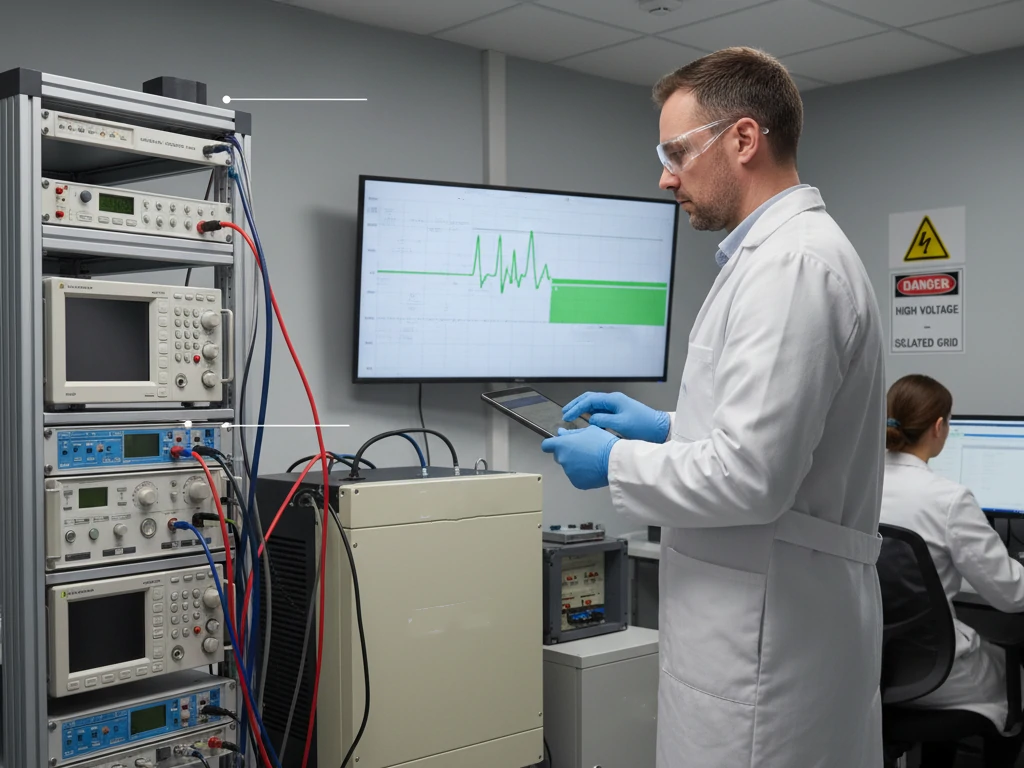
Preguntas frecuentes
-
¿Cuál es la diferencia entre insularización y antiinsularización?
El aislamiento se produce cuando una sección de la red queda aislada pero sigue recibiendo energía de fuentes distribuidas, como paneles solares. Esto puede crear peligros para la seguridad y riesgos para los equipos. Por otro lado, el mecanismo antiisla de los inversores solares está diseñado para detectar estas condiciones y desconectarse de la red, evitando posibles peligros.
-
¿Qué es el anti-islanding en un inversor de conexión a red?
El sistema antiisla de un inversor de conexión a red es una función de seguridad integrada que garantiza que el sistema deje de inyectar electricidad a la red en caso de corte o interrupción de la red. Supervisa continuamente la tensión, la frecuencia y el ángulo de fase para detectar posibles situaciones de isla y responde al instante para proteger tanto a las personas como a los equipos.
-
¿Por qué es importante la lucha contra el desistimiento?
El sistema antiisla es crucial por varias razones: protege a los trabajadores de las empresas eléctricas de la electrocución, evita daños en los equipos debidos a fluctuaciones de tensión o frecuencia y garantiza el cumplimiento de normas de seguridad como IEEE 1547 y UL 1741. Sin ella, los sistemas solares conectados a la red podrían plantear graves riesgos normativos y de seguridad.
-
¿Cómo funciona el anti-islanding en los inversores solares?
Un inversor de conexión a red utiliza una combinación de métodos de detección activa y pasiva. La detección activa introduce pequeñas perturbaciones en la red y observa la respuesta, mientras que la detección pasiva supervisa continuamente los parámetros de la red. Si se detectan anomalías, el inversor se desconecta automáticamente para evitar el funcionamiento en isla.
-
¿Cuáles son los retos de la aplicación del antiembarco?
Los problemas son la complejidad del sistema, los costes más elevados, la posibilidad de falsos disparos durante las fluctuaciones normales de la red y la limitada capacidad de reserva durante los cortes. Estos factores deben tenerse en cuenta a la hora de diseñar e instalar sistemas solares conectados a la red.
-
¿Cómo se pueden superar las limitaciones del antiislanding?
Las soluciones pasan por integrar sistemas híbridos con almacenamiento de energía, utilizar tecnologías avanzadas de inversores con métodos de detección de híbridos, aplicar una gestión inteligente de la carga y garantizar un diseño profesional del sistema. Estos enfoques ayudan a mantener la seguridad y la fiabilidad sin sacrificar el rendimiento.
-
¿Cómo se prueba la protección antiembarco?
Las pruebas pueden realizarse mediante simulaciones de laboratorio, pruebas sobre el terreno y equipos de pruebas automatizados. Estos métodos evalúan si el inversor solar se desconecta correctamente durante las perturbaciones de la red y si cumple las normas reglamentarias.
-
¿Están todos los inversores de conexión a red equipados con protección antiinundación?
Los modernos inversores solares conectados a la red deben incluir funciones anti-isla. Esto garantiza que todos los sistemas cumplen las normas de seguridad y protegen tanto a la red como a los usuarios de posibles peligros.
-
¿Se puede eludir la protección antiembarco?
Se desaconseja encarecidamente anular la protección antiembalamiento. Hacerlo infringe las normas de seguridad y puede poner en peligro la vida de los trabajadores de la empresa, dañar los equipos y anular las garantías o los certificados de conformidad.
-
¿Con qué frecuencia debe comprobarse la protección antiembarco?
Las pruebas periódicas son esenciales. Las mejores prácticas recomiendan realizar pruebas durante la instalación, después de actualizar el firmware y periódicamente a lo largo de la vida útil del sistema para garantizar una fiabilidad continua y el cumplimiento de normas como IEEE 1547 y UL 1741.
-
¿Qué ocurre si un inversor de conexión a red no detecta el funcionamiento en isla?
Si un inversor solar no detecta el funcionamiento en isla, la electricidad puede seguir fluyendo hacia la red aislada. Esto puede poner en peligro al personal de la compañía eléctrica, dañar aparatos y equipos y, potencialmente, dar lugar a sanciones reglamentarias o problemas con el seguro.
-
¿Pueden los dispositivos anti-islanding mejorar la eficiencia de los sistemas solares?
Mientras que el sistema antiisla se centra principalmente en la seguridad, los inversores modernos con métodos de detección híbridos reducen los falsos disparos y mejoran la fiabilidad general del sistema. Los protocolos de desconexión y reconexión fiables ayudan a mantener una producción de energía constante al tiempo que protegen la red.
-
¿Afectan los protocolos antiinundación a los sistemas solares aislados?
El anti-islanding es relevante para los sistemas conectados a la red. Los sistemas no conectados a la red funcionan de forma independiente y suelen depender de baterías o inversores híbridos. En estos casos, el funcionamiento en isla no es un problema, pero pueden existir protocolos de seguridad similares para proteger los equipos y a los usuarios.
-
¿Cómo interactúa el anti-islanding con las redes inteligentes?
Los inversores solares avanzados se comunican con los sistemas de red inteligente para garantizar la rápida detección de anomalías. La protección anti-islanding junto con la monitorización de la red inteligente permite optimizar la distribución de energía, minimizar los tiempos de inactividad y mejorar la seguridad durante las perturbaciones de la red.
-
¿Pueden los propietarios controlar el funcionamiento del sistema antiinundación?
Sí. Muchos inversores solares modernos ofrecen interfaces, aplicaciones o paneles de control. Estas herramientas permiten a los propietarios hacer un seguimiento del estado del sistema, detectar anomalías y recibir alertas en caso de que se active el sistema antiinundación, lo que aumenta la transparencia y la seguridad.




